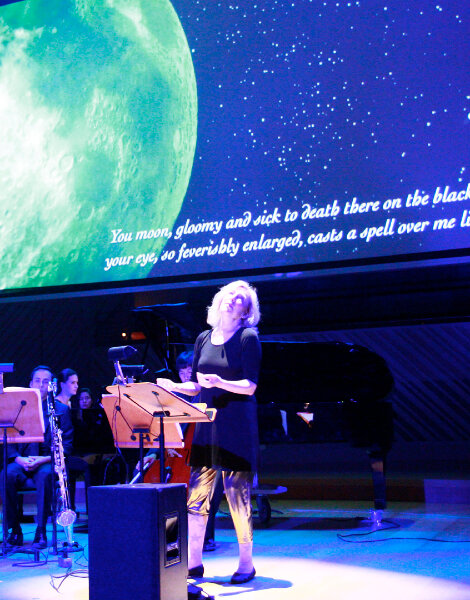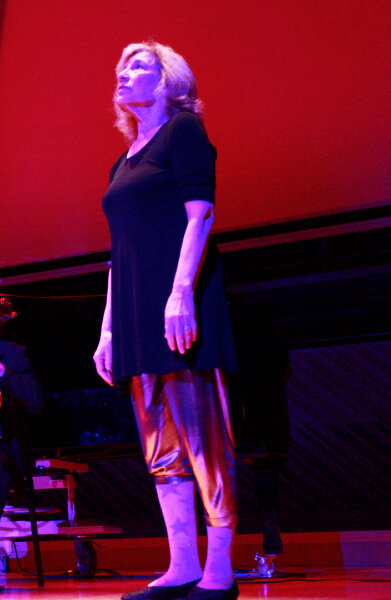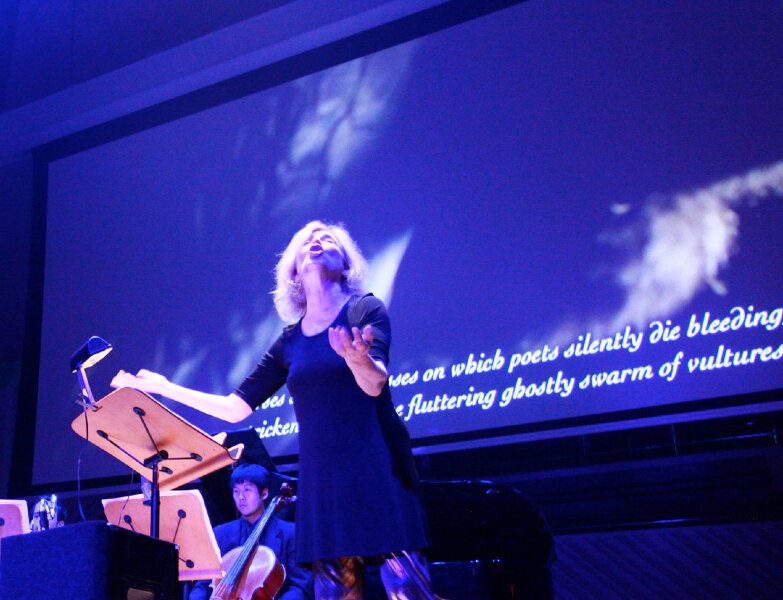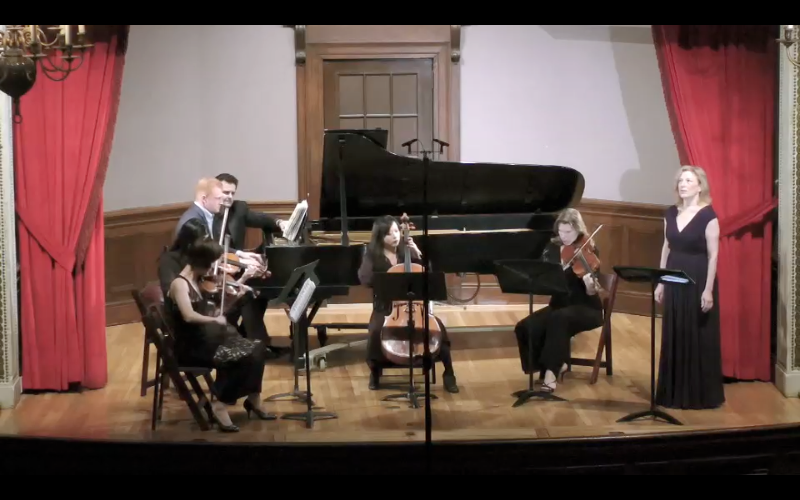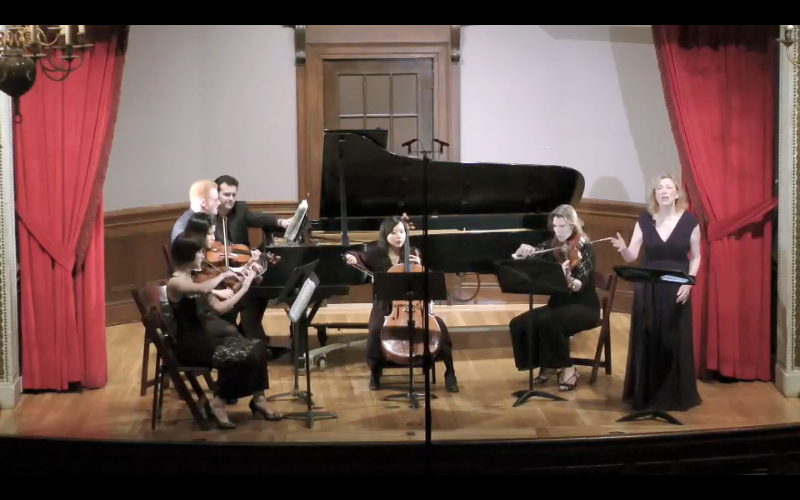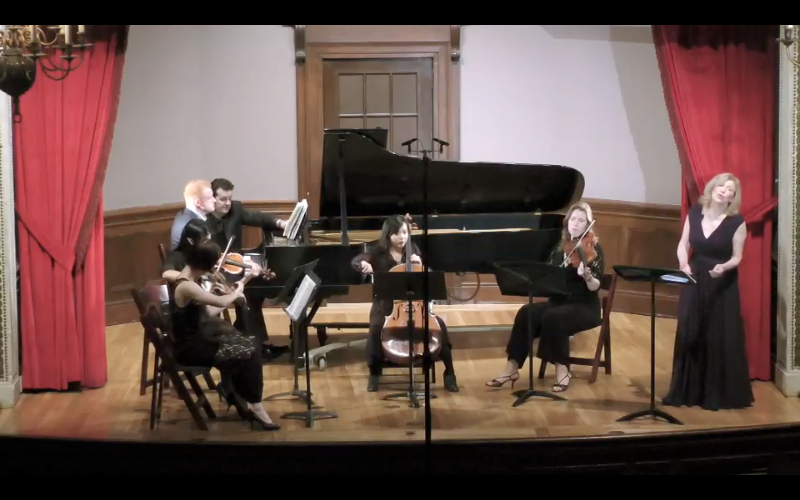Photo: Matt Dine
Commedia dell’Arte
Paula Robison comes from a family with a strong theater tradition; her mother was an actor, her father and uncle playwrights. She worked with Jeff Corey in his historic Los Angeles acting and improvisation workshops for young people, and during the same years studied dance with Bella Lewitsky. Her world-traveling, ground-breaking career as a flute soloist began when she won First Prize at the Geneva International Competition and gave her New York Debut under the Auspices of Young Concert Artists with rave reviews from the New York Times. But through the years her love of theater never left her, especially Commedia dell’Arte and specifically Schoenberg’s “Pierrot Lunaire”. In 2007 Paula Robison made a new English performance version of the “Pierrot” texts, using both the original Albert Giraud poems and Otto Erich Hartleben’s translations, and took the speaking part for two performances at the Barge in New York City. On December 31st 2009, in celebration of the full moon, the New Year, and a lunar project by Gardner Museum Artist-in-Residence Taro Shinoda, she was again the “Sprecherin” in a special midnight performance of Schoenberg’s expressionist masterpiece. Ms Robison has had the pleasure of narrating Poulenc’s “L’Histoire de Babar” with pianist Jean-Yves Thibaudet, including performances with the Chamber Music Society of Lincoln Center, at BAM, and at the Spoleto Festivals in the USA and Italy, and appearing as speaker in Sofia Gubaidalina’s “Garten von Freuden und Traurigkeiten”, also with the Chamber Music Society of Lincoln Center. In March of 2011 she worked with Argento New Music in a performance of “Pierrot Lunaire” at Cornell University. In the 2011-2012 season she performed “Pierrot” with special lighting and projections at The New World Symphony, and helped to celebrate the inauguration of the new Calderwood Concert Hall at the Isabella Stewart Gardner Museum with a critically acclaimed performance now available for viewing on Youtube. She also leapt into her first “Ode to Napoleon” of Schoenberg with the vibrant New York new music group counter)induction. She celebrated the 100th birthday of “Pierrot Lunaire” with Argento New Music, Michel Galante conducting, in seven performances at the Austrian Cultural Forum in New York City. On display at the ACF was a specially assembled collection of paintings by Arnold Schoenberg. In April 2019 she joined a superb group of artists at CUNY’s Graduate Center for a concert including Claude Debussy’s original incidental music for Pierre Loüys’ “Les Chansons de Bilitis” and Francis Poulenc’s “L’Histoire de Babar”.
Commedia Reviews
“The texts of “Pierrot’’ – full of bloody, phantasmagorical visions – demand a dramatic approach. But it’s hard to imagine them being performed with more uninhibited theatricality than Robison gave them. Speech prevailed over song, and her voice took on a Sybil-like array of characters: conspiratorial whispers, animalistic shrieks, inebriated wonder, childlike pleas all found their way in. At times her performance was almost over the top, but its twisted, dramatic force was riveting.”
– The Boston Globe, 2012
“If I say that after this performance I had a feeling of discovery, as if Ms. Robison and her colleagues had really gotten it right for this first time in my experience, I can’t mean that quite literally, but, without minimizing the achievements of others, I can say that I found in it a comprehensive understanding of the whole and its countless details, both in the text and in the music, which I found surpassingly coherent and expressive, but not in the least cautious or less than fully alert in the hyper-conscious way Schoenberg demanded. On the one hand, she shows a deep understanding of the “thrice seven” poems Schoenberg extracted from the original fifty and the way they fit together in his imaginative scheme. On the other hand, her experience as an instrumentalist has given her a unique grasp of the melodic and textural qualities of the vocal contribution, which I have not ever heard from a singer. Some of her phrases are highly colored speech, and others become melodic and musical. The nature of the written part, in other words does not stop her from participating in the ensemble as a full member. Especially impressive was the way in which she blended her part with the ensemble, as indicated in Schoenberg’s score.”
– The Berkshire Review 2011
“Paula Robison pranced the stage as Pierrot, at times shrieking the text with mad abandon or nearly whispering thoughts in intimate reverie. Robison truly embodied Pierrot, both lovable and wild.”
– South Florida Classical Voice 2012
“Paula Robison’s sprechstimme was alternately light, primal, wry, hysterical, and explosive… she often surveyed, pranced about, and stalked the stage, making direct eye contact with the audience and members of the ensemble, unpredictably oscillating between seduction and menace ….an absorbing, superbly executed celebration of this masterpiece.”
– The Boston Musical Intelligencer 2012
“….with both heat and light.…she amplified the Sprechtstimme aspects of Schoenberg’s presentation of the text, as well as the passions that drive it. “
– The New York Times 2012
“Paula Robison, a national treasure, spoke her part with a perfect blend of the profound and theatrical.”
– La Folia 2012

